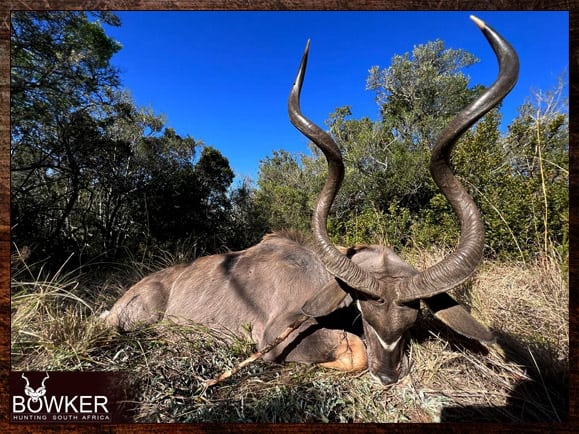The purpose of this article is to describe our hunting areas and concessions and the type of free range hunting we conduct.
Introduction
Table of Contents
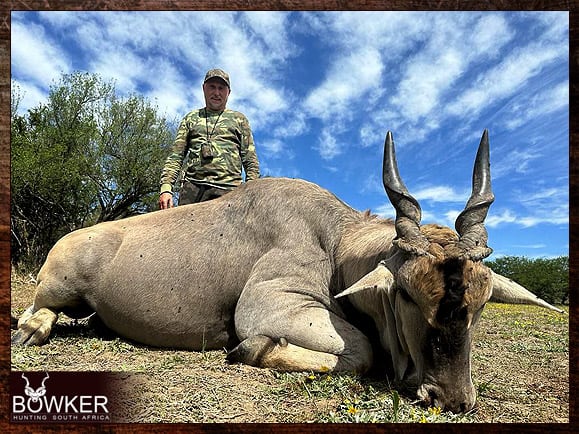
We hunt on low-fenced ranches with four-foot barb-wired fences to keep sheep and cattle. Plains game primarily moves at will over and through these low fences.
We do not hunt in traditional high-fenced game farms where we drive on the same roads daily and shoot games from the truck.
We have access to over 2 million acres of farmland for hunting in and around Bedford.
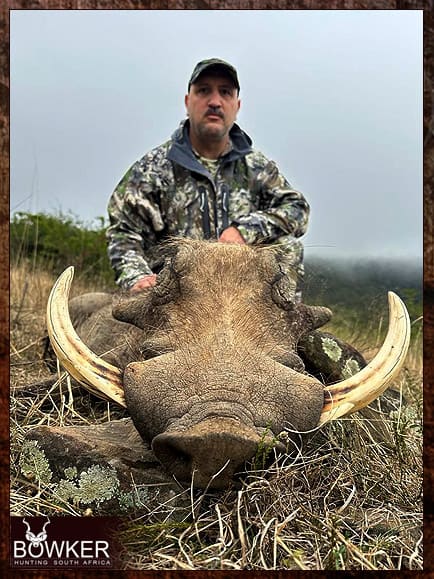
Bedford has a unique topography with mountains, plains, valley bush-veld, and savanna. This results in a wide variety of plains game with an extremely high density of animals.
The landowner (Rancher) owns all game residents on their property. This includes transient animals.
The local farmers manage the animals well, as they have a vested interest and are paid per animal.
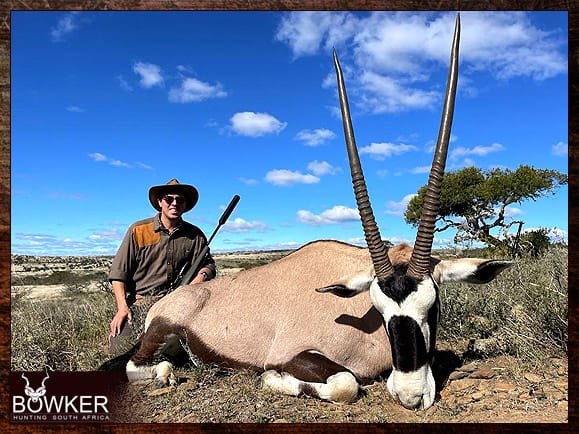
They also keep the venison, which they can sell. There is a thriving venison market in South Africa. Nothing goes to waste. Even the bones are turned into bone meal.
For certain species, we do enter high-fenced game farms. Alternatively, when we struggle to shoot a specific trophy towards the end of the hunt, we may visit a high-fenced game farm to ensure you get your animal package.
See a detailed list of animals below and related discussions on how and where they are hunted.
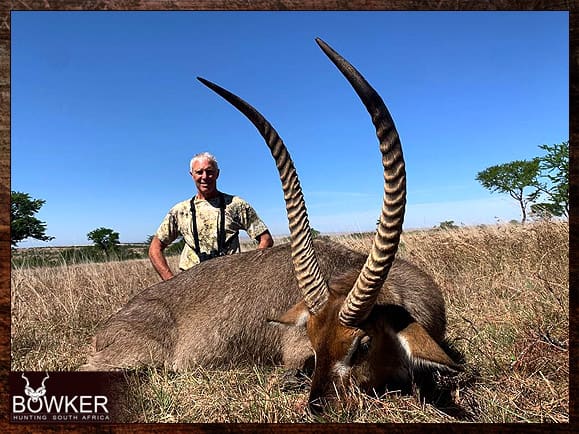
Free Range Hunting versus Free Roaming
A lot has been written about Free Range Hunting and Fair Chase Hunting. Free-range hunting can be defined as keeping in natural conditions with freedom of movement. Also, no human-made barrier prevents the animal’s movement.
Another concept is “Free-Roaming” in South Africa because the animals are born, bred, live, and die on the property.
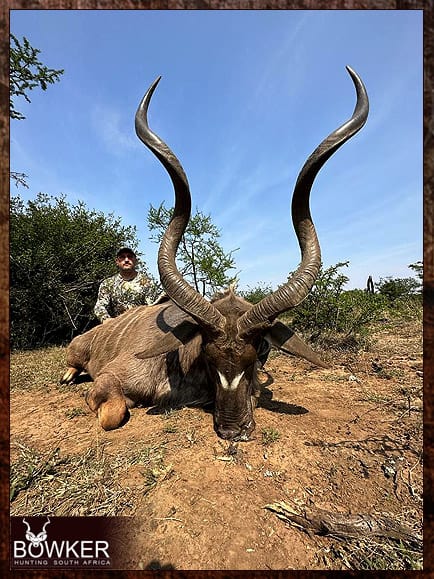
Wilderness Hunting in Africa
If you are looking for a true wildness hunt, you will need to hunt in Mozambique, Zimbabwe, and Tanzania. In these areas, you will be hunting without any fences or human-made obstacles, such as public roads.
This remoteness comes at a cost with expensive day fees being mandatory as well as extra time and costs to get to these wilderness areas.
In particular, these costs come before you have even seen an animal. For many, the cost and time are prohibitive. As a result, South Africa has become the premier safari hunting destination in the world.
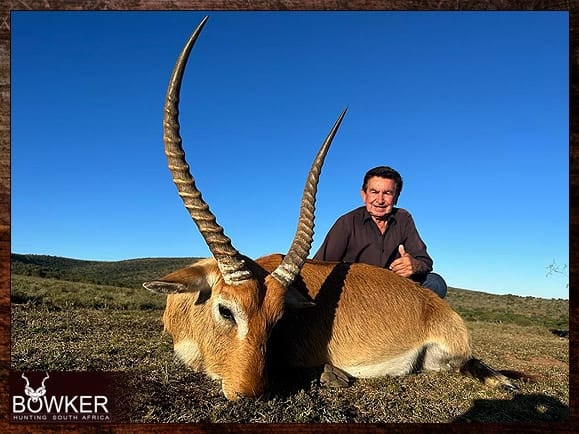
Low Fenced Hunting
These areas do not have high fences but rather four-foot barbed wire fences designed to stop sheep and cattle movement. Consequently, the vast majority of animals can move and roam at will. Certain animals, such as wildebeest, will be held in check.
These non-high fenced areas belong to the local farming community. Outfitters who hunt exclusively in these areas are often farmers and have dual income from farming and outfitting.
You will struggle to find a property in South Africa or Namibia with no fences somewhere along the line, be it a park border, a high fence on a neighboring property, or a barrier to public roads.
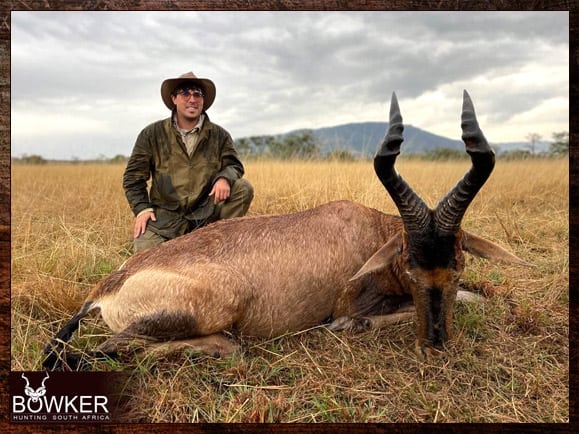
High Fenced Hunting in Game ranches
The majority of hunting in South Africa is conducted behind high fences. The size of the high-fenced areas varies greatly. High fencing is often a necessity for Outfitters from an economic perspective.
For these typically larger, high-fenced outfitters, outfitting is often their only source of income. Generally, free-roaming and fair chase hunting applies to high-fenced outfitters.
These larger, high-fenced outfitters need to replenish trophies due to Hunting and genetics. As a result, South Africa is the most affordable hunting destination in the world. Nowhere else can you hunt so many species at a cost you could not dream about two or three decades ago.
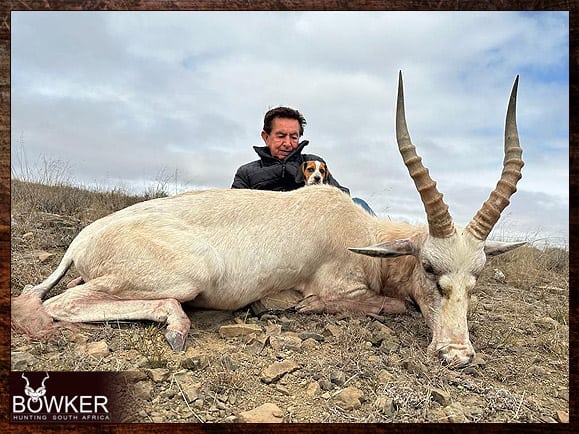
Free Ranging Game
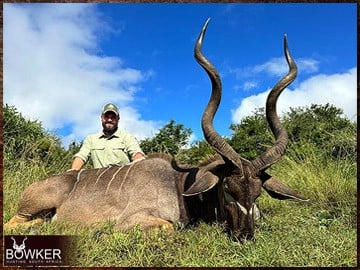
We hunt Kudu outside of high-fenced areas. The East Cape kudu is indigenous and occurs in large numbers throughout the Eastern Cape. Kudu jumps nearly all fences with ease. They will, in fact, jump high fences as well.
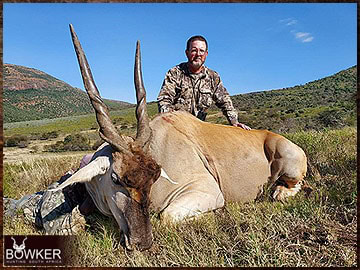
We hunt Cape Eland in high-fenced areas and outside high-fenced areas. The Bedford mountains have many free-ranging Eland herds, but big bulls are challenging to hunt. Cape Eland can jump any fence.

We hunt Nyala in low-fenced areas. Nyalas are not indigenous but were introduced and occur in large numbers in the Bedford area in and around our hunting concessions. Nyala jumps any stock fence.
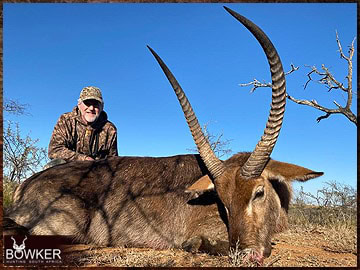
We hunt Waterbuck outside of high-fenced areas. Waterbuck is not indigenous but has also been introduced, and numbers are plentiful throughout the Bedford area. Waterbuck will jump over or through just about any fence.

We hunt Impala only in low-fenced areas. Impala is not indigenous but has also been introduced and occurs in huge numbers on the surrounding farms at our hunt lodge. Like Nyala, Impala jumps any stock fence.
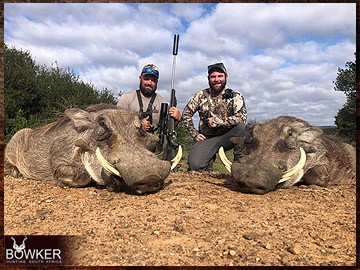
Warthogs are hunted outside of high fences. Warthogs are considered indigenous, occur in vast numbers, and are hunted by locals enthusiastically. Warthog smashes through any fence. Not even electric fences can hold them in. The holes at the bottom of stock fences become game trails for many other species.
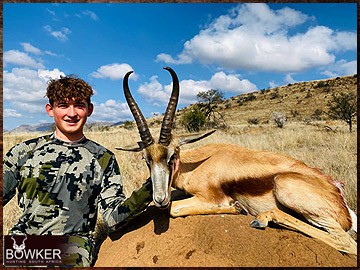
Springbok hunts are in low-fenced areas only. They are indigenous, go through fences, and jump the stock fences. By far the most common game animal. The Warthog trails provide the migratory routes for entire herds of springbok.

Red Lechwe jump any stock fence. We hunt Lechwe free-range and within high-fenced hunting concessions. The numbers of free-ranging Lechwe are good both on the plains and in mountainous areas. They are not indigenous to the Eastern Cape and have adapted well to the Savanna. Their natural home is on the swamps.
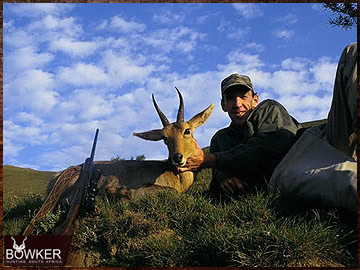
Mountain Reedbuck, like Springbok, goes through and over stock fences. They are indigenous and are found throughout our hunting areas. Nearly every rocky outcrop or draw has a family of Reedbuck. They are hunted in low-fenced areas.
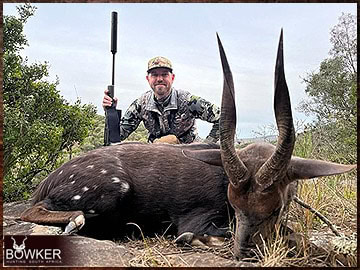
Bushbuck is indigenous to the Eastern Cape. They are hunted in the mountains or along river valleys. They are plentiful, and jumping any stock fence is no problem. All bushbuck hunting is free-range.

Depending on availability, Red Hartebeest hunting occurs outside and inside high fence areas. Hartebeest jumps stock fences. They are indigenous to the Eastern Cape and plentiful.
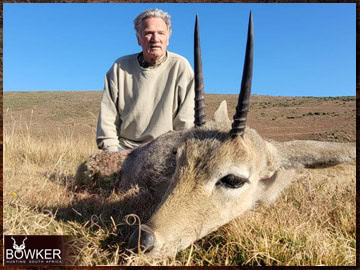
Grey Rhebok or Vaal Rhebok occurs in the mountains over 5000 feet. They are indigenous and very much free-ranging, similar to the Mountain Reedbuck. All Rhebok hunts are free-range.
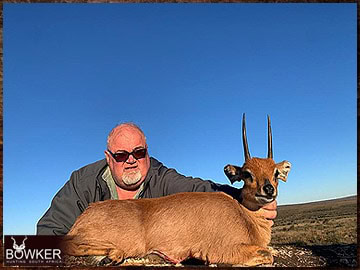
Steenbok is indigenous to the Eastern Cape, South Africa. They are plentiful, particularly around Hopewell Hunt Lodge. These small antelope go through any stock fence and often use the Warthog holes. We only hunt Steenbok free-range.
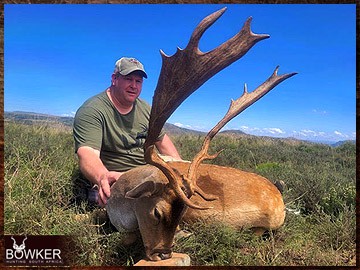
Like many parts of the world, Fallow Deer is an introduced species from England. Fallows are big jumpers, and stock fences are no impediments. Fallow Deer hunts take place in and out of high-fenced areas.
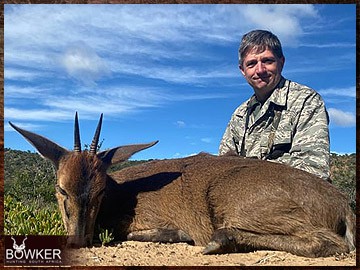
Similar to Steenbok in size, Duiker also goes through stock fences and uses the Warthog holes as a game trail. Grey Duiker are indigenous to the Eastern Cape, and all hunting is free-range.
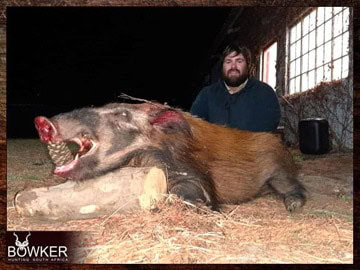
Bushpigs are nocturnal and seldom seen by plains game hunters. Like warthog, getting through fences is no impediment. They are indigenous, and all hunting is free-range.
Pains Game that are impeded by sheep and cattle fences
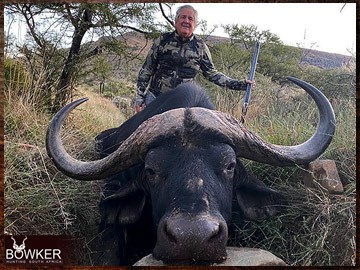
Cape Buffalo are hunted behind high fences. They were indigenous and have been re-introduced to game farms. Our concession area is in the mountains with very thick brush in a large area. This Buffalo hunt is proper. The bulls are challenging to find and shot at close range. Be prepared to be charged!
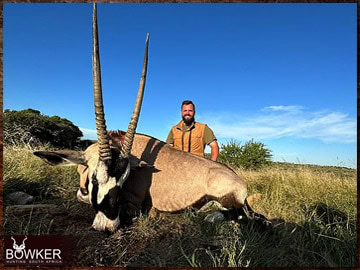
Stock fences impede Gemsbok, but they get out mainly through the Warthog holes. They are indigenous to the Eastern Cape. Hunts are conducted in low-fenced areas, primarily in our concession areas, rather than the surrounding farms.
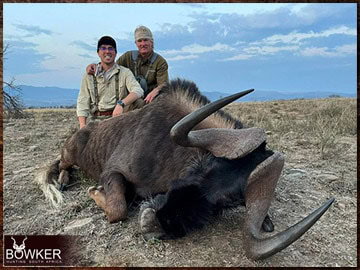
Similar to Gemsbok, Black Wildebeest are impeded by stock fences. Also indigenous to the Eastern Cape. They are hunted in low-fenced areas, primarily on the surrounding farms.
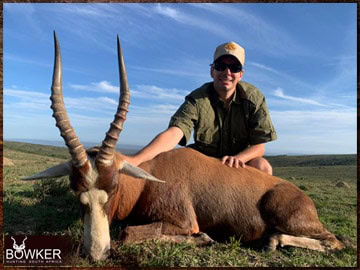
Stock fences also impede Blesbok. Indigenous to the Eastern Cape South Africa. They are true plains game antelope and are hunted in low-fenced farms, including our own farms.

The Burchell’s Zebra and Mountain Zebra are indigenous to the Eastern Cape. Fences impede free movement, and Zebra are hunted in the low-fenced surrounding farms.
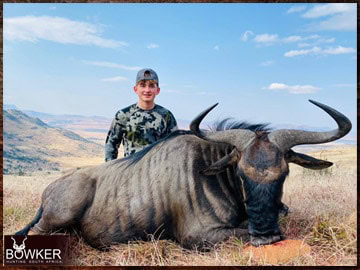
Blue Wildebeest are not indigenous to the Eastern Cape, unlike the Black Wildebeest. They have been introduced and are predominantly hunted on local farms in low-fenced areas. Like Black Wildebeest, low fences impede movement, but under pressure, they can jump a low fence.
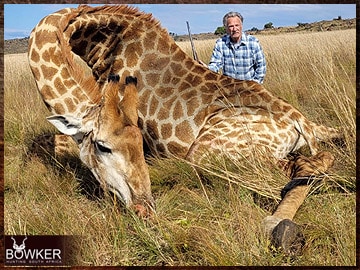
Giraffes are not indigenous and are a specialist trophy. They are hunted behind high fences where they have been introduced.
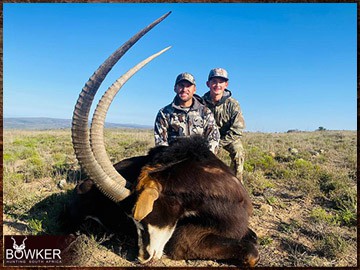
Sable antelope are not indigenous and have been introduced by some farmers. We have Sable herds of our own. They can jump low-stock fences. We hunt behind partially raised stock fences.
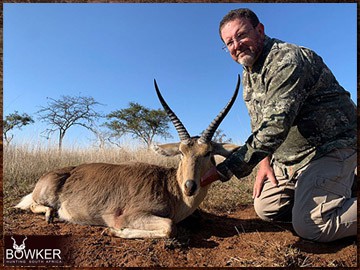
Common Reedbuck are hunted in high-fenced game farms and are not indigenous to the Eastern Cape. Common Reedbuck jump stock fences.
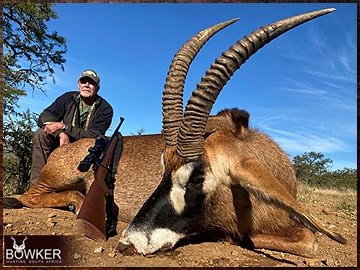
Roan antelope is an introduced species and is not indigenous. Roan are hunted in high-fenced game farms. Roan can jump a standard stock fence.
